May 15, 2025 | 22:14 GMT +7
May 15, 2025 | 22:14 GMT +7
Hotline: 0913.378.918
May 15, 2025 | 22:14 GMT +7
Hotline: 0913.378.918
“With the winter conditions in Korea, the temperature sometimes drops to minus 20, minus 30 degrees Celsius, but the weather is dry and sunny, so when growing strawberries, you only need to warm the greenhouse. Meanwhile, strawberry growing in Hanoi favours cooling and reducing humidity. We chose Hanoi to demonstrate this smart farm technology because it is convenient for promotion. Moreover, the technology also aims to adapt to climate change because strawberries can even grow in hot climates", Ms Pham Thi Thanh Hai, manager of Ele Farm Vina Company Limited - the farm operator spoke to me amid the hum of hundreds of exhaust fans like a giant swarm of bumblebees.
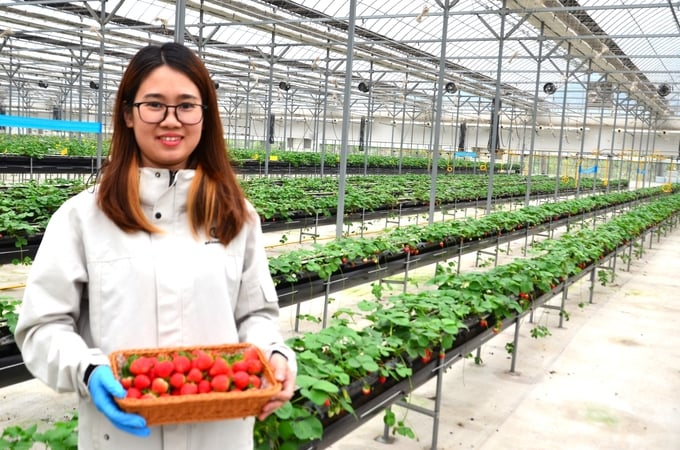
Ms. Pham Thi Thanh Hai, manager of Ele Farm Vina Co., Ltd. next to the strawberry greenhouse. Photo: Duong Dinh Tuong.
The 1.2 ha greenhouse area in Vinh Quynh (Thanh Tri, Hanoi) was completed in 2022 and is a non-refundable aid from the Korean government to Vietnam through the Vietnam Academy of Agricultural Sciences (VAAS). All equipment and seedlings were brought from Korea and then assembled, operated, and retrained for Vietnamese people by their own people. The short-term goal is to find a way to grow strawberries in the hot and humid conditions of Hanoi. The long-term goal is to export smart greenhouse models to Vietnam.
"Why is it called a smart greenhouse?", I asked. Ms Hai said that because all devices are controlled by smartphones or computers connected to the network. Up there are all the parameters such as temperature, humidity, rainfall, wind direction, and nutrients dissolved in water, in the substrate... When it rains, the roof closes by itself, when it's dry, the roof opens by itself. Plants are grown semi-hydroponically, rooted in the substrate. The automatic fertilizer irrigation system sets up the necessary nutritional regime for the plants, delivering nutrients to each tree root. The air conditioning system will operate when it is too hot, especially during the 2 weeks of flower bud differentiation, maintaining a temperature of 10 - 25 degrees Celsius.
The root cooling system uses water-cooled below 20 degrees Celsius to push the heat out into the garden through the circulating pipe system. It goes deep into the substrate, reducing the temperature around the roots and then returning it to the tank. For the unmanned automatic spraying system, you just need to flip the switch for it to run from the beginning of the row to the end of the row.
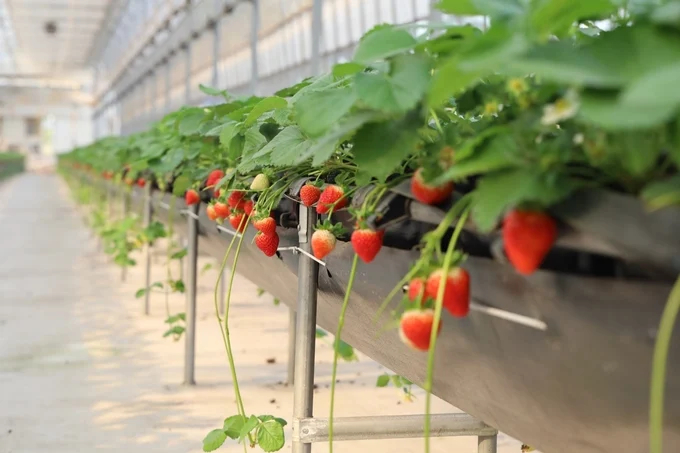
Close-up of Korean strawberries. Photo: Documents.
Even though it is modern and consistent, the first strawberry crop (winter 2022) was not successful due to the humid, misty weather and lack of light, so even though the fruit was quite beautiful and fragrant, it was not sweet. Of the output of 4 tons, more than 1 ton was damaged due to mould, the remaining was sour and bland and could not be sold. In the second strawberry crop (winter 2023), to cope with the hot weather, engineers improved by managing irrigation water and turning on the air conditioning system. But the wilt disease was rampant in addition to the widespread two-spotted red spider mites, so the yield was only 2 tons.
On average, each ha of strawberries in Korea has a yield of 20 tons/crop because there are 6-7 batches of flowers (from early winter until June of the following year). Each ha of strawberries in Vietnam only has 2-3 batches of flowers (from early winter to March of the following year), so productivity is very low. During the main season, the farm sells experience tickets for VND 50,000/person entering, selling the fruit at VND 350,000/kg. At the end of the season, when the fruit is small and the output is low, they no longer sell tickets but only sell strawberries for VND 250,000/kg...
My feeling is that strawberries grown in Da Lat taste sour, bland and less fragrant; the strawberries grown in Moc Chau taste less sour but still not satisfactory. Strawberries grown in Hanoi taste better, but they are only 6/10th the size of imported Korean strawberries. Ms Hai explained that strawberries require an average of 5-6 hours of sunlight per day for the fruit to be delicious and sweet. However, from January until now, Hanoi has only had a few sunny days, and the sky is always in the dark. Due to a severe lack of sunlight, engineers had to turn off water to make the fruit firmer and sweeter, but this led to a lack of nutrition and low productivity due to semi-hydroponic growing.
In addition to requiring 5-6 hours of sunlight/day, strawberries also need a temperature below 25 degrees Celsius and humidity below 60%, meanwhile, on many winter or spring days in Hanoi, the humidity reaches over 90%, causing the fruit to grow white mould. During weeks like that, the engineers spent all day carrying buckets to pick up rotten fruit and then dumping them one by one, it was painful to do so because it was like wasting effort and money.
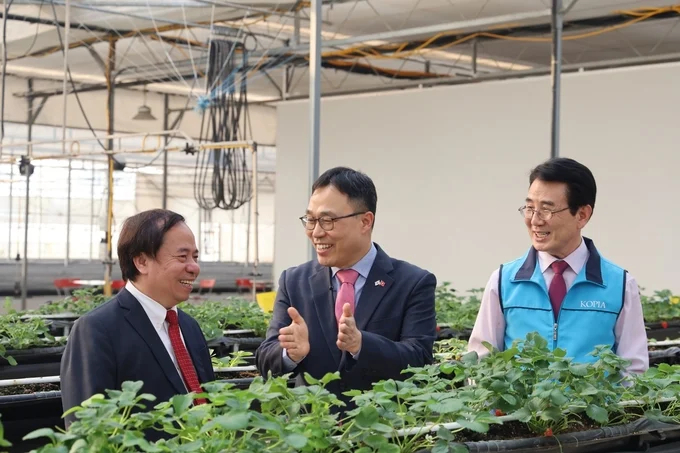
Prof. Dr. Nguyen Hong Son (far left), Director of VAAS and Korean partner. Photo: Documents.
Suddenly, I met a Hmong man named Mua A Ky, 23 years old, from Mu Cang Chai district of Yen Bai province as a technician here. After graduating from the College of Agriculture, he was introduced to the internship by his teacher, then did it and went through 2 strawberry crops like that. Unlike his hometown, which is over 1,000 meters above sea level, Hanoi is not too cold in the winter, and in the summer the temperature in the greenhouse reaches up to 50 degrees Celsius, forcing Ky to wear sunscreen and drink lots of water to endure.

Mua A Ky is taking care of strawberries. Photo: Duong Dinh Tuong.
He eats and sleeps right in the greenhouse area, so in addition to working during office hours, in the evening he goes out to check whether the equipment is turned off and whether there are any leaks. Many times, the drizzle in the North does not have enough sensors to recognize it and order it to close the greenhouse roof, so he has to close it manually.
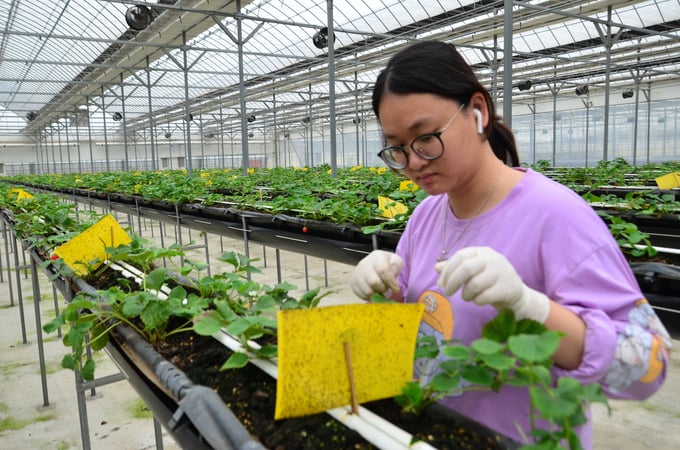
Sticky trap for harmful insects. Photo: Duong Dinh Tuong.
Once this Korean-style smart farm is technically sound, if you want to expand, the Vietnamese side can be completely self-sufficient in materials to reduce costs, rather than having to import raw materials from snails onwards as currently.
Translated by Hoang Duy
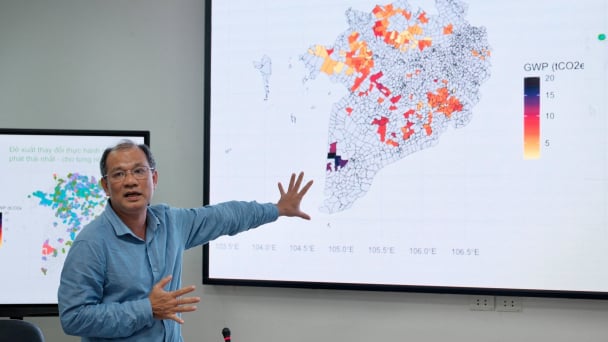
(VAN) Data from 10,000 farming households will help professionalize production organization and support the implementation of the One Million Hectares Program for High-Quality, Low-Emission Rice Cultivation.
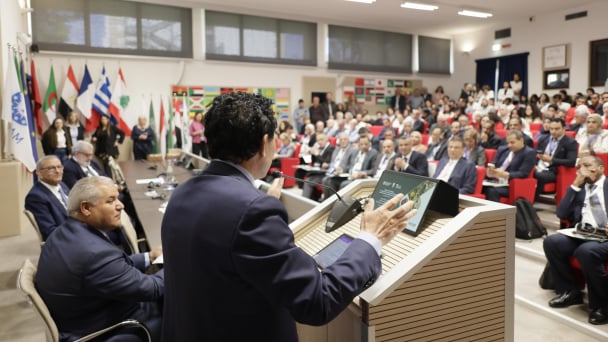
(VAN) FAO Director-General QU Dongyu marks International Day of Plant Health at NENA conference.
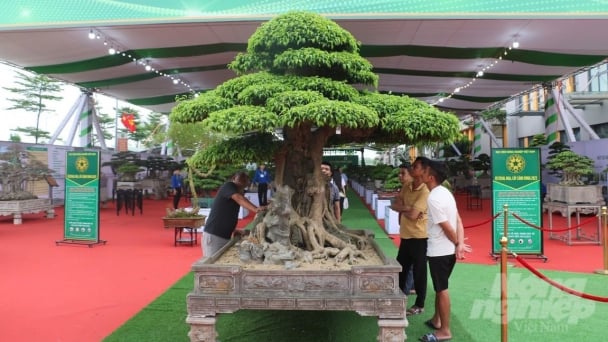
(VAN) Deputy Minister of Agriculture and Environment Hoang Trung affirmed that floriculture and ornamental plants are a growing industry that receives significant global attention.

(VAN) The three staple crops dominating modern diets – corn, rice and wheat – are familiar to Americans. However, fourth place is held by a dark horse: cassava.
/2025/05/10/4037-3-223011_495.jpg)
(VAN) Remote sensing technology is becoming an indispensable tool in monitoring resources, developing modern agriculture, and protecting the environment in Vietnam.
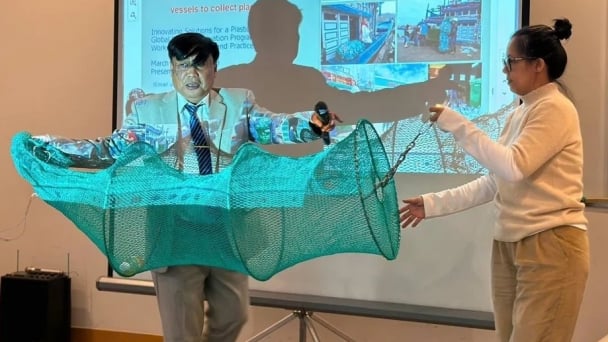
(VAN) The trash bag used on fishing vessels can withstand rough sea conditions, including level 8 to level 10 winds and waves. Notably, it can be hung anywhere on the boat.
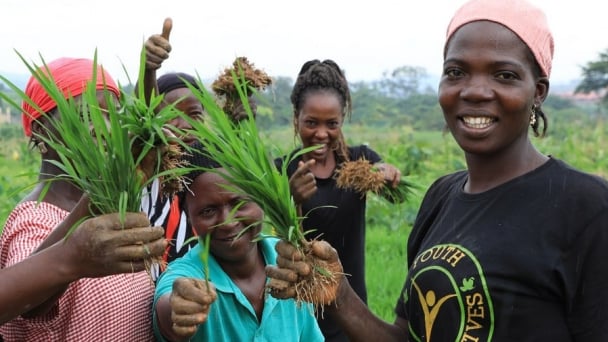
(VAN) African leaders launched the Kampala Declaration on Building Resilient and Sustainable Agrifood Systems in Africa, marking a bold step toward transforming the continent's agriculture.